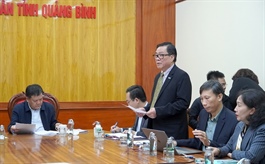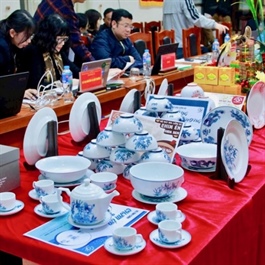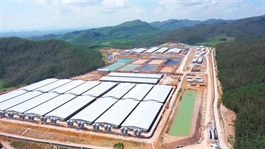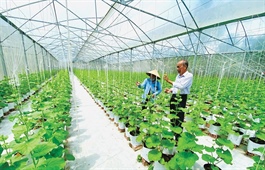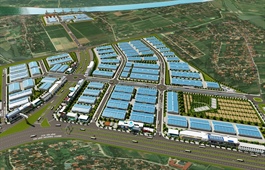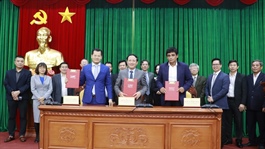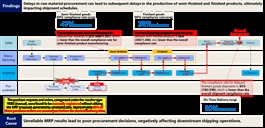Health M&As need careful navigation
Health M&As need careful navigation
Strong growth potential is expected to spur on mergers and acquisitions in Vietnam’s healthcare and pharmaceutical industry in 2025, but a more business-conducive environment is being called for so that the potential is actually reached.

Regulatory compliance and operational issues may result in deal delays, photo Le Toan |
Binh Dinh Pharmaceutical and Medical Equipment (Bidiphar) is currently looking for a strategic investor for an offering of 23.3 million privately issued shares. Bidiphar now has KWE Beteilgungen AG as a major shareholder, which has increased its ownership several times.
In March 2024, KWE bought 222,000 Bidiphar shares, increasing ownership from 5.24 million to 5.46 million shares (7.29 per cent). In August, it added 87,000 shares, increasing the ownership ratio to 8.09 per cent. Now, it seeks more than 10 per cent.
Increasing ownership was a trend in the mergers and acquisitions (M&A) in 2024. According to analysts ABS, in 2024, although no more major deals were inked, foreign investors continued to show positive expectations for the prospects of Vietnam’s pharma industry by continuing to invest and increase their ownership in pharma companies.
At Ha Tay Pharmaceutical, its major shareholder ASKA Pharmaceutical of Japan did similarly. In 2024, ASKA bought shares of Ha Tay Pharmaceutical to increase the ownership to 38.2 per cent. It has now registered to buy more than 1.4 million shares of the latter.
In late 2023, Ha Tay Pharmaceutical completed the private offering of 8.4 million shares, equivalent to 11.36 per cent of ASKA, enabling the Japanese firm to raise its ownership from 24.9 per cent to 32.56 per cent.
In the past, the market saw big deals involving leading foreign-invested groups in the pharma and healthcare industries, including Abbot’s acquisition of a 51 per cent stake in Domesco, Stada’s acquisition of Pymepharco, Taiso’s 51 per cent stake in DHG Pharma, and SK’s ownership of nearly 65 per cent in Imexpharm.
Last year, the market saw a slowdown in pharma and health M&A. It witnessed a transaction between Long Chau Pharmacy and IHH Healthcare Singapore, but this was a rare event in the industry during the period.
Experts said that the Vietnamese M&A market and in pharmaceuticals in particular are expected to gradually recover in 2025, driven by increasing demand for quality healthcare services, an ageing population, and growing interest among foreign investors. A series of infrastructure and real estate companies are also focusing on the healthcare market.
Darrell Oh, chairman of Pharma Group, said that according to a members survey in 2024, the country has significant potential in attracting additional investment from multinationals.
“The key starting point in our view would be to address the current critical issues relating to market access, create a more business-conducive environment, and put in place incentives in policies that are closely linked with market access to attract and sustain investment,” he said.
Experts, however, said that the healthcare sector in Vietnam presented significant opportunities for M&A, but there were also several potential deal-breaker issues that investors must navigate carefully. From minimum capital requirements and operational scope to environmental compliance and key personnel retention, these challenges can derail a transaction if not properly addressed.
Pharma analyst Ngo Thanh Hai said that despite the potential, several issues posed challenges during transactions, particularly in regulatory compliance and operational matters. These hurdles may result in delays, financial losses, or even the cancellation of deals if not properly managed.
“Generally, the foreign investor (except those exempted under a specific free trade agreement) investing in healthcare facilities are subject to meeting the minimum capital. The applicable minimum is $20 million for a hospital, $2 million for a polyclinic, and $200,000 for a speciality clinic. However, the regulations remain unclear about how and when these minimum capital requirements must be fulfilled,” he said.
This lack of clarity presents practical challenges during M&A approvals. “Investors are left uncertain about whether their capital commitments, or their explanation for the satisfaction of the minimum investment capital, are sufficient to satisfy regulatory requirements, causing potential delays in obtaining approval from authorities,” Hai added.
Industry expert Nguyen Quoc Bao added that to navigate this ambiguity, foreign investors can explore alternative strategies to meet the capital requirements. “A convertible loan can be used as a funding mechanism to meet the minimum capital requirement. This loan can later be converted into equity, following the acquisition of the foreign investor. When implementing this strategy, developing a robust set of transaction documents is crucial to minimise risks for the foreign investor,” Bao said.
Alternatively, foreign investors can also consider investing through an ASEAN Framework Agreement on Services or EU special purpose vehicles, where capital arrangements do not need to follow the minimum requirements, Bao said.




